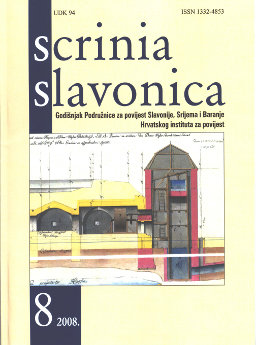SLAVENI U RANOSREDNJOVJEKOVNOJ JUŽNOJ PANONIJI
SLAVS IN THE EARLY MEDIEVAL SOUTH PANNONIA
Author(s): Hrvoje GračaninSubject(s): Ethnohistory, Middle Ages
Published by: Hrvatski institut za povijest
Keywords: Slavs; Avars; South Pannonia; early medieval period; ethnogenesis;
Summary/Abstract: Based on written and archaeological materials, as well as relevant historiographic literature, the paper provides a systematic analysis of testimonies about the early presence of the Slavic ethnicity in South Pannonia in the early medieval period, from the first indications of Slavic presence in the Slavonian Danube Valley until the times of Carolingian incursion and the fall of the Avar Khaganate. It also addresses the issue of Slavic ethnogenesis and the role of the Avars in Slavic expansion in South Pannonia. The first indications of the presence of proto-Slavic populations in the central Danube Region perhaps fall into the middle of the 5th century and the time of Hunnish domination, but it is impossible to offer a conclusive answer to this question, since neither the literary (Priscus) nor the archeological evidence provide sufficient proof. Perhaps it is only possible to state that such an assumption would not be unlikely considering the scope of the Hunnish state, i. e. that individual groups of proto-Slavic populations could have reached the Pannonian lowlands under Hunnish patronage. The hypothesis that the (proto)Slavs could have expanded to the central Danube Region in the first half of the 6th century is somewhat more likely, but it, too, relies almost exclusively on the interpretation of literary sources (Jordanes, Martin of Bracara). Most likely it had been only an inflow of smaller (proto)Slavic groups, but their arrival had not passed unnoticed.
Journal: Scrinia Slavonica
- Issue Year: 2008
- Issue No: 8
- Page Range: 13-54
- Page Count: 42
- Language: Croatian

